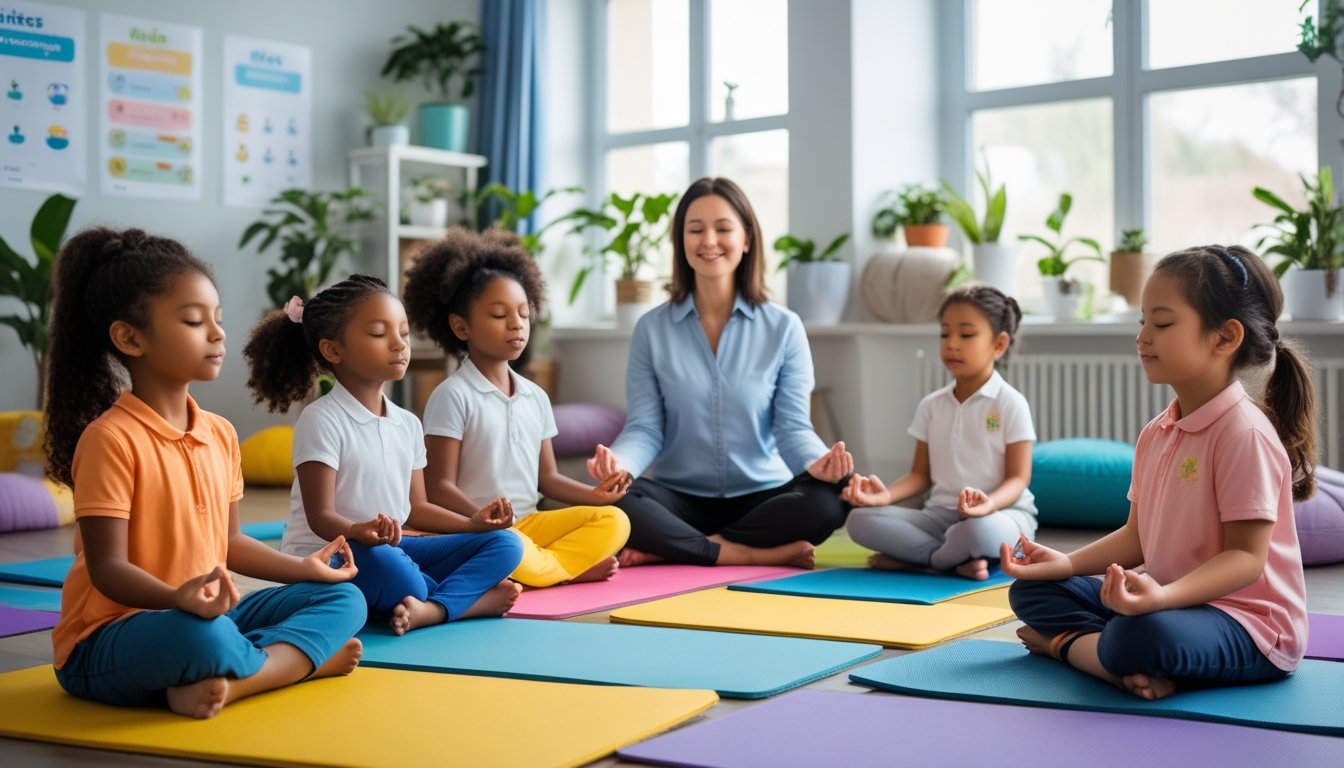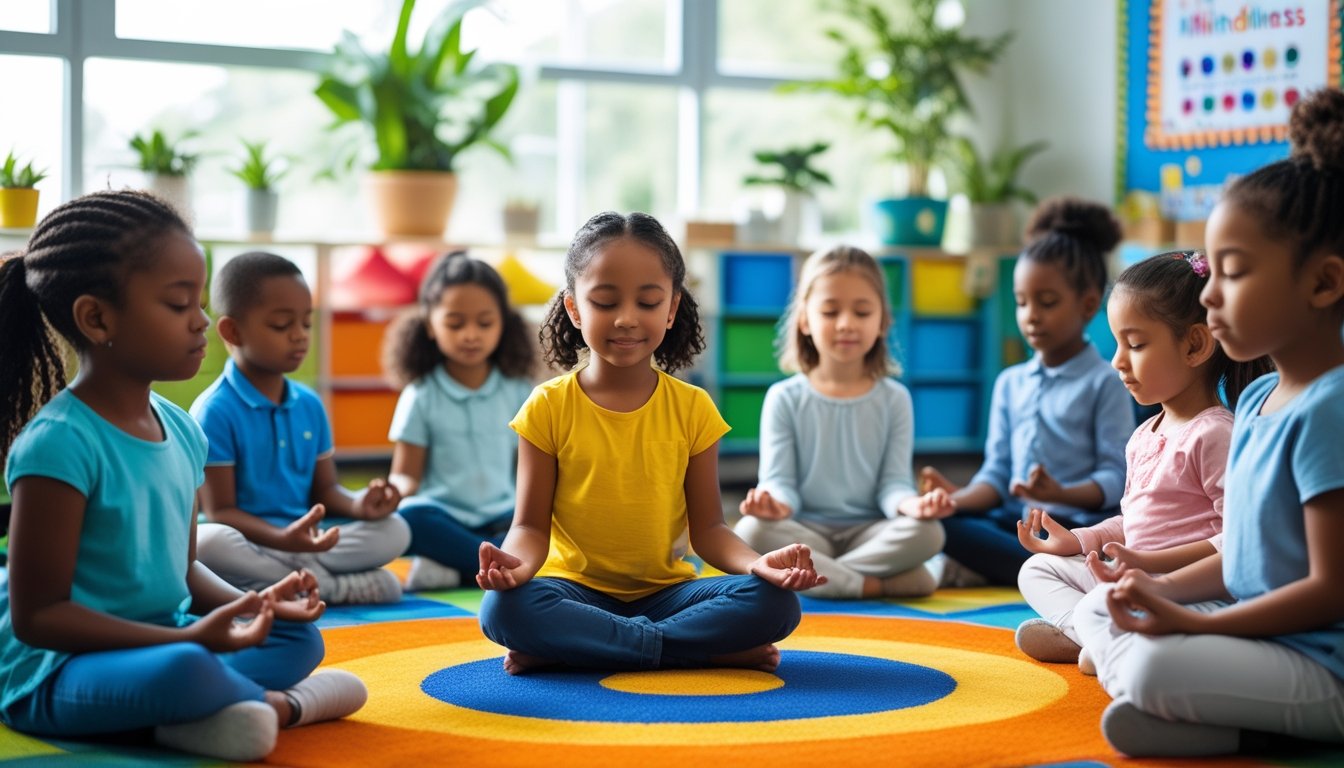Late updated: 31 May 2025 14:05
Written by:
Incorporating Mindfulness in Children's Daily Routine: Essential Tips for Parents
Introducing mindfulness to children may initially seem like a challenge, but it can have profound benefits on their overall well-being. By embedding mindfulness practices into their daily routines, we can help children develop essential skills for emotional regulation and focus. Mindfulness can be seamlessly integrated into activities such as morning routines, playtime, and even homework sessions. This approach not only nurtures a calm and centred mindset but also fosters resilience and self-awareness in children.

Mindful breathing, gratitude journaling, and listening exercises are simple yet powerful practices that can be engaging and enjoyable for kids. Designating a quiet space free from distractions encourages both children and adults to engage in these activities without interruption, offering a shared experience that strengthens family bonds. By making mindfulness a part of everyday life, we create an environment that supports the mental health and emotional growth of our children.
Key Takeaways
- Mindfulness can be integrated into daily routines for calmness.
- Kids benefit from mindful breathing and gratitude journaling.
- A distraction-free space enhances mindfulness activities.
Essential Mindfulness Practices for Children
Incorporating mindfulness into children's daily routines can significantly enhance their ability to manage stress. Simple practices like mindful breathing, guided meditation, and yoga can be easily integrated into their day.
Mindful Breathing Exercises
Mindful breathing is an accessible way for children to start experiencing mindfulness. We can teach them to focus on their breath by inhaling slowly through the nose and exhaling through the mouth. Belly breathing is particularly effective; children place their hands on their stomachs to feel the rise and fall with each breath. This exercise helps them centre their attention and fosters a sense of calm. Regular practice helps children remain present, reducing anxiety and enhancing their focus in various daily activities.
Guided Meditation and Visualisation
Guided meditation is a calming activity that can help children relax and focus their minds. By using guided imagery, we can take them on imaginative journeys, like floating on a cloud or walking through a serene forest. These visualisation techniques encourage children to explore their inner world and develop self-awareness. Through these exercises, they can learn to manage emotions and thoughts effectively, providing them with valuable relaxation techniques. Incorporating short sessions into their day can lead to long-term benefits.
Yoga and Mindful Movement
Yoga combines movement with mindfulness, helping children enhance their physical strength and mental clarity. Simple poses, such as the Tree Pose or Cat-Cow Stretch, encourage children to connect with their bodies and the present moment. By focusing on how each movement feels, children learn to listen to their bodies and develop balance and flexibility. Mindful movement promotes a healthy awareness of their physical and emotional states, equipping them with skills to remain grounded and centred. Yoga can be a joyful activity where children express themselves while practising self-discipline.
Integrating Mindfulness Into Everyday Routines

Incorporating mindfulness into daily life can significantly enhance a child's focus, emotional regulation, and overall well-being. Let's explore how we can integrate mindful activities into different parts of the day.
Morning Mindfulness Activities
Starting the day with mindfulness can set a positive tone for hours to come. Simple activities like belly breathing are effective as they calm the mind and promote self-awareness. We can encourage children to spend a few moments focusing on their breath, filling their abdomen with air and releasing it slowly.
Mindful colouring is another wonderful way to start the day. By concentrating on colours and textures, children can enhance their focus and creativity. Adding a brief nature walk allows the opportunity for reflection and appreciation of the environment, grounding them in the present moment.
Mindful Activities During School and Homework
During school and homework, maintaining focus and emotional regulation is crucial. Mindful activities, such as short meditation breaks, can help reduce stress levels. These breaks involve quiet sitting, focusing on breathing or listening to calming music, which can rejuvenate weary minds and improve concentration.
Incorporating mindful walking between lessons or study sessions can also be beneficial. This involves walking slowly, paying attention to each step, and recognising thoughts or feelings that arise, aiding in developing self-regulation skills. Teaching mindfulness within school settings can lay the foundation for empathy, enhancing social interactions and promoting resilience.
Reflective Journaling in the Evening
Reflective journaling in the evening serves as a powerful tool for emotional regulation and self-awareness. Encouraging children to jot down their thoughts about the day fosters introspection. We can guide them to write about what they are grateful for, any challenges faced, or moments that sparked joy.
Journaling can help build resilience by analysing emotions and finding constructive responses to negative experiences. It also offers a pathway for children to communicate their feelings, developing empathy and a positive impact on their mental well-being. A consistent journaling practice nurtures a habit of reflection, preparing them for mindful living.
Frequently Asked Questions

Incorporating mindfulness into children's routines offers numerous benefits, such as improved focus, emotional intelligence, and stress management. Addressing common questions can help caregivers and educators effectively apply mindfulness techniques tailored to children’s varied needs.
How can I embed mindfulness practices into my child's everyday activities?
Embedding mindfulness can be simple. We can incorporate short breathing exercises or sensory-awareness activities during daily routines, like during meals or before bed. Engaging children in these practices regularly builds their mindfulness skills.
What are some brief mindfulness exercises suitable for a classroom setting?
In classrooms, mindfulness exercises need to be concise. Techniques such as the Five Senses Exercise, where children focus on what they can see, hear, touch, and more, are effective. These activities help maintain students' attention and calm.
In what ways can a mindfulness worksheet benefit children and how is it best utilised?
Mindfulness worksheets offer structured guidance for practice. We can use them to teach children to reflect on their thoughts and emotions. These worksheets should be interactive to keep children engaged and should align with their age level.
Can mindfulness techniques be adapted for very young children, such as those in preschool?
We can certainly adapt these techniques for young children. For preschoolers, short sessions of simple breathing exercises or guided imagery can be effective. Keeping activities playful and short helps sustain their attention.
What methods are there to ensure mindfulness is integrated consistently within the school curriculum?
Integrating mindfulness can be achieved by including regular short sessions in the daily schedule. Training teachers in mindfulness techniques ensures they can lead these sessions effectively, fostering a consistent practice throughout the school.
Are there specially designed mindfulness activities for teenagers, and how can they be accessed?
Teenagers benefit from age-relevant activities that address their developmental stage. Online resources and local workshops often provide exercises focused on stress reduction and self-awareness. Accessibility through digital platforms can engage teenagers in consistent practice.
